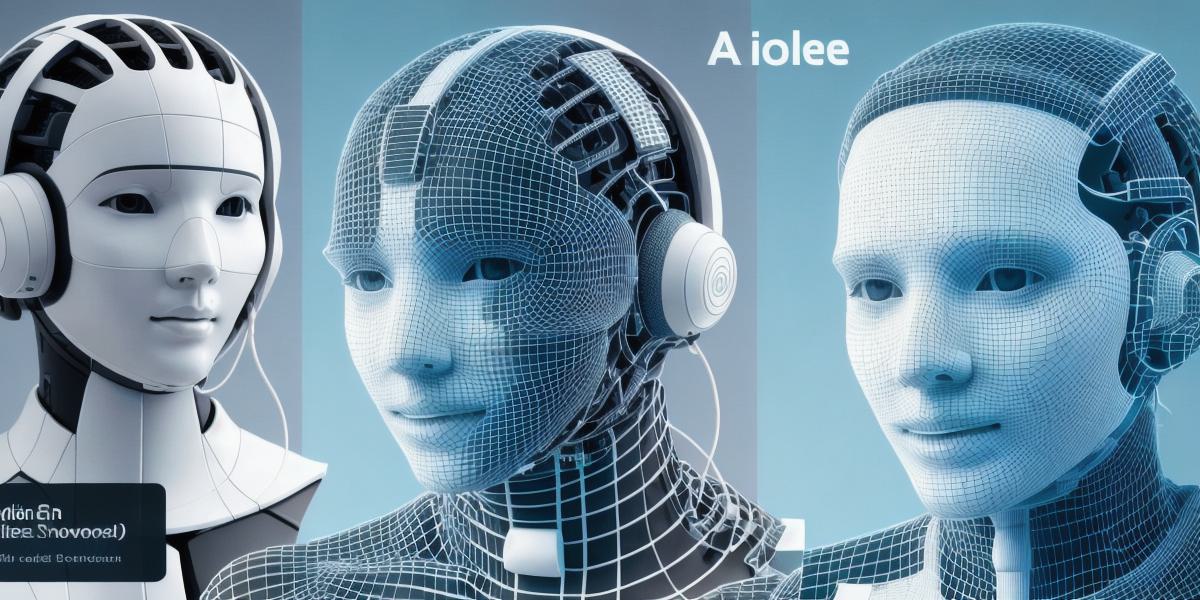Introduction
Artificial intelligence (AI) has been rapidly advancing in recent years, and its impact on industries such as gaming and entertainment is no exception. In particular, AI models have proven to be highly useful for 3D developers looking to create immersive and engaging experiences. However, with so many different types of AI models available, it can be difficult for developers to know which one to use for a particular project. In this article, we will explore the different classifications of AI models and how they can be used in 3D development.
Supervised Learning
Supervised learning is one of the most widely used types of AI models, and it involves training a model using labeled data. This means that the model is given input/output pairs, and it learns to make predictions based on those examples. In 3D development, supervised learning can be used for tasks such as object recognition and segmentation, as well as animation and motion prediction. For example, a 3D model of a character could be trained using labeled data to recognize different poses and facial expressions, allowing the character to appear more realistic and engaging.
Unsupervised Learning
Unsupervised learning is a bit less common than supervised learning, but it can still be highly useful in certain applications. This type of AI model involves training a model without any labeled data, allowing it to identify patterns and relationships in the input data on its own. In 3D development, unsupervised learning could be used for tasks such as generating new textures or lighting effects based on existing data.
Reinforcement Learning
Reinforcement learning involves training a model to make decisions in an environment by receiving feedback in the form of rewards or punishments. This type of AI model is particularly useful in games, where the model can learn how to play the game by interacting with it and receiving feedback based on its performance. In 3D development, reinforcement learning could be used for tasks such as creating realistic AI characters that can learn and adapt to different situations.
Deep Learning
Deep learning is a type of machine learning that uses neural networks to process large amounts of data. This type of AI model is particularly well-suited to image and video processing, making it an ideal choice for 3D development. In this context, deep learning could be used for tasks such as creating realistic textures or lighting effects, as well as generating new animations and motion sequences.
Case Studies
One example of the use of AI in 3D development is the creation of a virtual reality game called "Don’t Look Up." This game was created using a combination of supervised and unsupervised learning, with the AI models learning to predict player behavior based on past data. Another example is the creation of the AI-powered character "Aiden" in the movie "Ex Machina." Aiden was created using reinforcement learning, allowing it to learn how to interact with its human companions and make decisions based on its environment.
Conclusion
In conclusion, there are many different types of AI models available for 3D development, each with their own strengths and weaknesses. By understanding the different classifications of AI models and how they can be used in 3D development, developers can create more engaging and immersive experiences for their users. Whether you’re a beginner or an experienced developer, by using these tips and tricks, you can take your 3D projects to the next level.
FAQs:
- What is supervised learning?
A supervised learning AI model involves training a model using labeled data, allowing it to make predictions based on examples. - What is unsupervised learning?
An unsupervised learning AI model involves training a model without any labeled data, allowing it to identify patterns and relationships in the input data on its own. - What is reinforcement learning?
Reinforcement learning involves training a model to make decisions in an environment by receiving feedback in the form of rewards or punishments.
